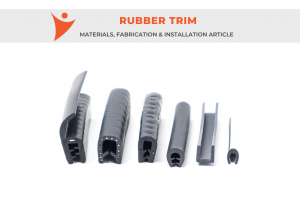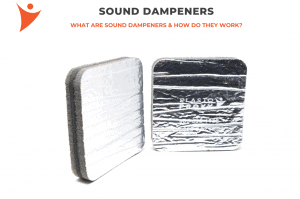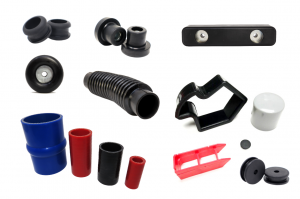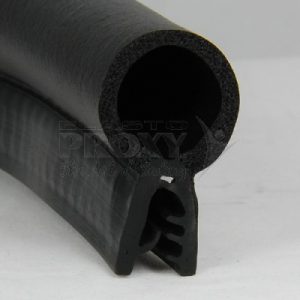 Learn about bulb trim seal measurements from Elasto Proxy.
Learn about bulb trim seal measurements from Elasto Proxy.
Bulb trim seals are industrial rubber products that are used to seal and insulate doors, hatches, and enclosures. They fit radiused corners and have separate bulb and retainer sections, each of which can have a different durometer (hardness) and use a different material. The bulb compresses to form a seal when the door, hatch, or enclosure is closed. The trim or retainer attaches to the flange or substrate.
There are many different types of bulb trim seals, and plenty to learn about these industrial rubber products. In this two-part series from Elasto Proxy, we’ll examine three bulb trim seal measurements that engineers need to specify: bulb size, bend radius, and flange thickness.
Bulb Size
Choose a bulb that’s large enough to fill the gap and that also supports the proper amount of compression. Determining this bulb size is a two-step process that’s represented by the following calculation.
Bulb Size = Average Jam Dimension + Compression Percentage
First, calculate the average jam dimension. An easy way to do this is to place some modeling clay in each corner and then close the door, hatch, or enclosure to compress the clay. Next, insert calipers into the clay and record the measurement for each corner. Now divide this number by four to get the average jam dimension or gap size.
Next, apply a percentage to this amount to account for compression. As a rule of thumb, apply between 25% and 50%. Do not apply more than 50% because over-compressing the bulb will not create a better seal. In fact, over-compression can reduce seal life and cause compression set, a permanent deformation that occurs when a force that was applied to a material is removed.
Bend Radius
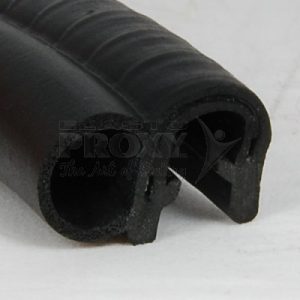 Unlike some other industrial rubber products, bulb trim seals aren’t designed for 90-degree corners. To accommodate rounded or radiused corners, choose a bulb trim seal with a bend radius that will support flexing or bending and avoid kinking. To do this, determine the minimum distance from the center point to the edge (the radius) that the seal must bend.
Unlike some other industrial rubber products, bulb trim seals aren’t designed for 90-degree corners. To accommodate rounded or radiused corners, choose a bulb trim seal with a bend radius that will support flexing or bending and avoid kinking. To do this, determine the minimum distance from the center point to the edge (the radius) that the seal must bend.
Remember that a more flexible material can support a smaller bend radius. Yet if the radius is too tight, the corners can “pop” out. Conversely, if the bend radius is too large, recesses or valleys may form and allow the passage of water. The results can range from drafty doors on mobile equipment to leaky doors on electronic enclosures.
Note: Elasto Proxy’s in-house laboratory can perform three separate tests to determine the maximum bend radius before kinking.
Flange Thickness
Finally, specify the thickness of the trim or retainer section. This gap or thickness is the distance between the two “legs” or straight sections. As a rule, this measurement should equal the thickness of the flange or substrate. For example, if a bulb trim seal has flange that’s 1/2” thick, choose a bulb trim seal with a gap of 1/2”. Specifying a larger or smaller gap may result in leakage.
Learn More About Bulb Trim Seal Measurements
Elasto Proxy supplies a wide variety of bulb trim seals and can custom-fabricate bulb trim for your specific application. We offer minimum order quantities (MOQs) as small as a coil, and keep plenty of standard profiles in stock. If you need expert fabrication, ask how we can splice seals into endless loops or create square or rectangular gaskets.
Next week, in our final blog entry for 2017, we’ll cover some bulb trim seal compounds (and colors) that can both strengthen and brighten your designs. Until then, and whenever you have questions about sealing and insulation, contact Elasto Proxy.


